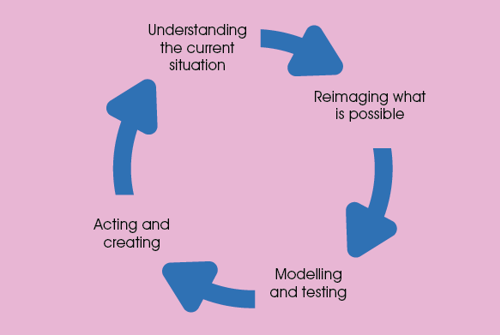What’s new
From the start of the pandemic, the various lockdown measures created an extraordinary collective unfreeze of practices and processes.
Employees dropped some traditional work habits (like commuting into the office), developed new skills (like digital skills and working in virtual teams) and changed their networks (often spending less time with colleagues and more time with family and friends).
Now in the refreeze stage, many executive teams are in the process of creating more permanent and new ways of working.
We have seen that as models of work have changed – for example, hybrid work between home and the office – new challenges have emerged. Three are top of mind:
● How best to balance individual needs for flexibility with corporate requirement for productivity and innovation
● How to create fairness and equity across different jobs and employees
● How to build a process of change that engages people across the whole organisation
While each company we have studied are on their own unique path, collectively I have observed four phases that companies are engaging with: understanding the current situation; reimagining what is possible; modelling and testing; and acting and creating.
While I have presented this as a directional cycle of activity (see figure below), in reality, executive teams are cycling back and forth.
For example, some have jumped straight into action and then had to go back to building a deeper understanding, while others are returning again to the reimagination phase as they look inside and respond to employees’ needs for more creativity, while also responding to what their competitors are doing.
Taken together, the HR functions in many of these firms have played key roles and used a portfolio of capabilities to support these phases.

Key findings
Each executive team has embarked on their own unique journey as they respond to the impact of the pandemic and create new ways of working.
While there is much variety in how each of the four phases are tackled, underlying them are four core capabilities that members of the HR function have developed and honed: data analytics and insight, visualising, experimentation mindset, and change management.
How they apply to each stage is as follows:
Understand
For some executive teams, the starting point has been to understand jobs, employees and networks more carefully and from this to begin to redesign work in a way that maximises productivity, enhances employee engagement and reinforces critical pathways of knowledge acquisition and sharing.
Take the team at HSBC, who pulled together a team made up of experts from the HR and marketing function to develop and use data modelling techniques from consumer insight programmes to build deeper understanding of the experiences of employees.
They were particularly interested in individuals’ response to key life events like induction, becoming a parent, thinking about leaving.
Others have used surveys, in-depth interviews and focus groups to identify individual sources of motivation and the drivers of engagement. These teams, such as those at Tata Consultancy Services (TCS), have used their analytics on connectivity to build an understanding of the web of networks that exist both within teams and across the company.
By analysing both strong connections (to close friends and colleagues) and weak connections (to associates across the company), they have been able to track pre- and post-pandemic conduits of knowledge sharing, and determined how new models of work will strengthen or potentially diminish these connections.
"By understanding drivers of productivity, HR are more able to begin to model working practices in ways that enhance productivity and engagement."
Some teams are also taking a closer look at key job families and the tasks associated with productivity. For example, are the tasks primarily about focus (such as analysing data or preparing reports), are they about coordination (such as working on project teams) or are they tasks that require cooperation (such as face-to-face workshops).
By understanding these drivers of productivity, they are more able to begin to model working practices in ways that enhance productivity and engagement.
HR teams adept at creating this broad range of understanding are skilled at data analysis:
First HR capability- Data analytics and insight. The capability to create insightful data about people (motivations, attitudes, skills), jobs (focus, coordination, cooperation) and networks (both weak and strong connections). And to build these insights from multiple sources in order to create a sense of the whole system.
Reimagine
The impact of the pandemic was to fundamentally change the way people worked. Looking forward, some executive teams are using this as a time to reimagine work. They are doing this by stretching the boundaries and being imaginative about what is possible.
Typically, it is place that is the primary axis of imagination – with executive teams considering work from home/work from the office.
Some, like the Canadian investment fund CPP Investments, are experimenting with enabling some of their employees to work away from the office from a mutually agreed location (often outside of Canada) for a three-month period.
Others are working towards a balance of time spent in the office and time spent at home.
However, there is a growing realisation that for many employees (such as those in frontline care jobs or in assembly or distribution jobs) flexibility about place is not possible.
So, some teams are also taking a closer look at time. For example, trialling the four-day week or compressing schedules.
In this process of reimaging, HR teams have played a key role using a number of capabilities:
Second HR capability – Visualising. The capability to engage with groups of stakeholders (leaders through to frontline workers) to image and visualise what it possible in terms of place and time.
Check back tomorrow for part two of this feature exploring two further key HR capabilities and how to turn this research into reality.
The full article of the above first appeared in the July/August 2022 print issue. Subscribe today to have all our latest articles delivered right to your desk.









